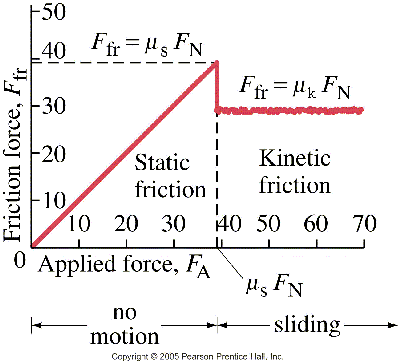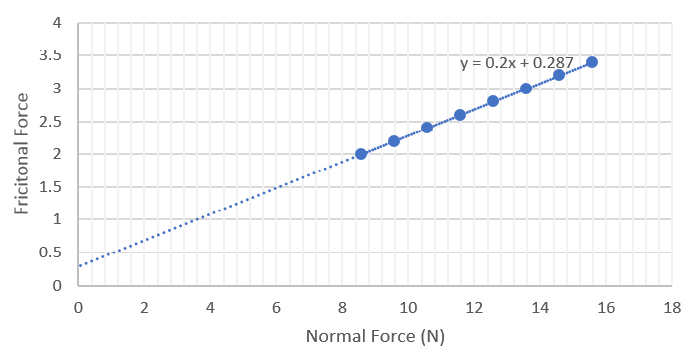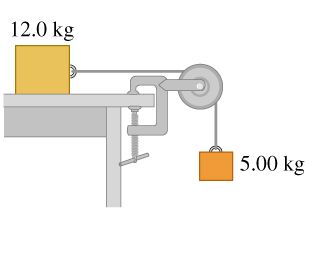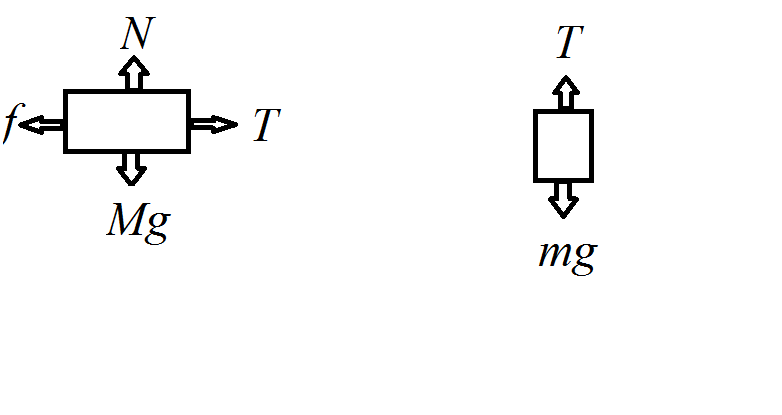Bermuda fitted dinghies racing in Granaway Deep. (Photo: Tom Clarke)
2.4 - Friction
Objectives:
- To know that the friction is a force that depends on the normal contact force.
- To understand the difference between static and kinetic friction
- To understand the concept of the ‘coefficient of friction’
|
Friction occurs when two surfaces meet. The friction ALWAYS opposes motion. If the object doesn't move, sometimes this can be hard to determine, but if you guess incorrectly, the frictional force will come out negative - so all OK!
Friction depends on TWO variables:
The term static friction is used when the object does not move, otherwise, it is kinetic friction. The coefficient of kinetic friction for any given surface is usually less than that of its static friction. |
The upshot of this is that it is hard to get something moving against friction, but once moving less force is required to maintain motion. Using the PhET Forces and Motion simulation can illustrate this. Strictly speaking the static friction is not a constant, but steadily increases to balance the applied force. However, as we usually only consider the limiting case where the object is just about to move this inequality can be considered equal in almost every case. Also, we should really use the subscripts 's' and 'k' to distinguish between the coefficients, but this is rarely critical as they don't often arise in the same problem.
|
\[f_{s} \leqslant \mu_{s} N\]
|
\[f_{k} =\mu_{k} N\]
|
LAB: Investigating Static Friction
|
Place a block of known mass on a surface, attach a string over a bench pulley. Add small masses on to the end of the string and record the mass required to make the block slip. This may require a bit of trial and error with different sized masses to achieve a good level of accuracy.
Then add \(100 \,\text{g}\) masses to the wooden block and repeat. The maximum static friction = weight of masses on the string The normal force = weight of the wooden block and additional masses. A graph of the static friction against the normal force should yield a straight line. The gradient of the trendline will be the coefficient of static friction! \[f=\mu _{s}N\] Sample data - the intercept is not zero due to friction in the pulley. |
Example 5
Two connected blocks as earlier, but this time the friction between the block and the surface prevents the blocks from moving. The set up shown is the limiting case where the blocks are assumed to be on the edge of motion!
Two connected blocks as earlier, but this time the friction between the block and the surface prevents the blocks from moving. The set up shown is the limiting case where the blocks are assumed to be on the edge of motion!
|
\(5 \,\text{kg}\) block:
\[F_{up}=F_{down}\] \[T=mg\] \[T=50\,\text{N}\] |
\(12 \,\text{kg}\) block:
\[F_{up}=F_{down}\] \[N=Mg=120\] \[F_{left}=F_{right}\] \[f=T\] |
Combining and solving gives:
\[f=\mu N\]
\[50=\mu\,120\]
\[\mu=0.42\]
\[f=\mu N\]
\[50=\mu\,120\]
\[\mu=0.42\]
TOP TIPS: carefully study the problem, determine if it accelerates or not. Draw the free body diagram(s). Treat perpendicular directions as independent. If no acceleration, use \(F_{up}=F_{down}\) and/or \(F_{left} = F_{right}\). If acceleration, use \(\sum{F}=ma\).
Other Resources
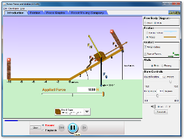
Newton's Laws and Car Crashes - recommended by Morgan Kornarski of Safe Kids
|
